HBB Collab IEMs Reviewed: KZ DQ6S & Tripowin Olina
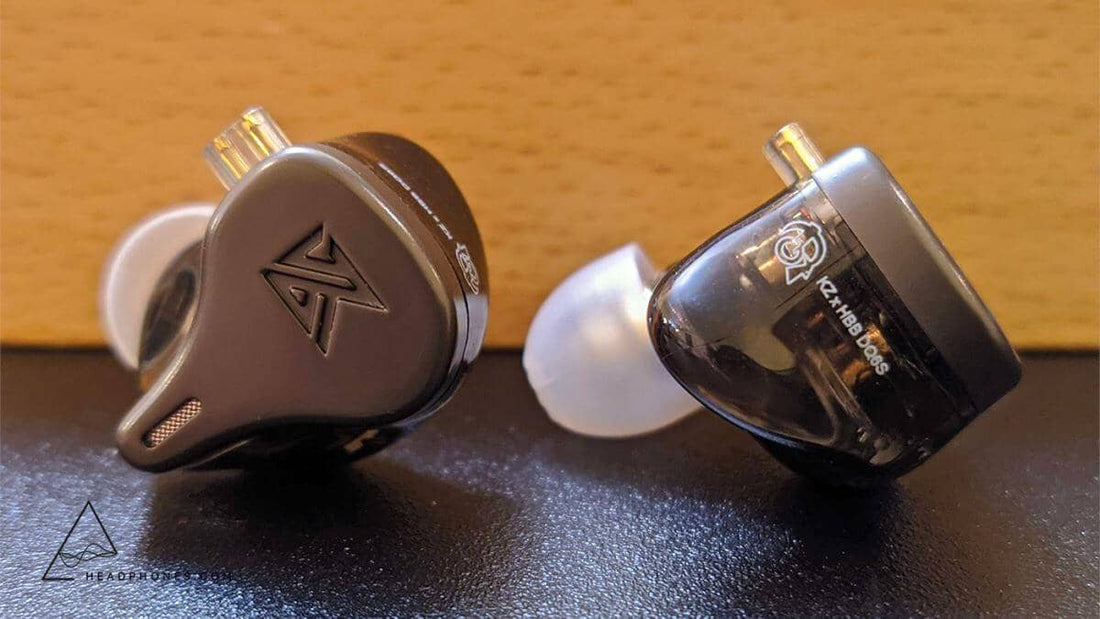
Review written by @Fc-Construct and @Precogvision
Introduction
Collaboration IEMs are all the rage in the IEM world these days, and YouTube reviewer Bad Guy Good Audio Reviews (BGGAR) or Hawaii Bad Boy (HBB) is the latest reviewer to join this trend. Following the success of his first collaboration, the Tripowin Mele, he's back with three more collaborations: the KZ DQ6S, the Tripowin Olina, and the LETSHUOER EJ07M Lava (which has yet to be released). The DQ6S is a revision of a previous KZ model, the DQ6, whereas the Olina is an "original" product that takes inspiration from the acclaimed Tanchjim Oxygen. Now in our own collaboration of sorts, Fc-Construct and I (Precogvision) will be sharing our thoughts about the first two IEMs. Spoiler alert...the DQ6S sports three DDs, and Fc-Construct has his doubts about whether more drivers are actually better. Something tells me (Precogvision) that the single-DD Olina might actually be the better value out of this duo! But continue reading for our in-depth thoughts.
KZ DQ6S
Price: $32/ Configuration: 3DD
KZ DQ6S provided courtesy of KZ.
https://kz-audio.com/kz-hbb-dq6s.html
What’s in the Box?
As standard with KZ, the unboxing experience is not much of an experience at all. You get 3 sets of S/M/L tips, a relatively serviceable cable, and the IEM itself. It’s essentially the same unboxing experience as the Crinacle CRN I reviewed before with a minor difference on the faceplate of the IEM. Instead of a contoured, metallic faceplate we have a flat one.
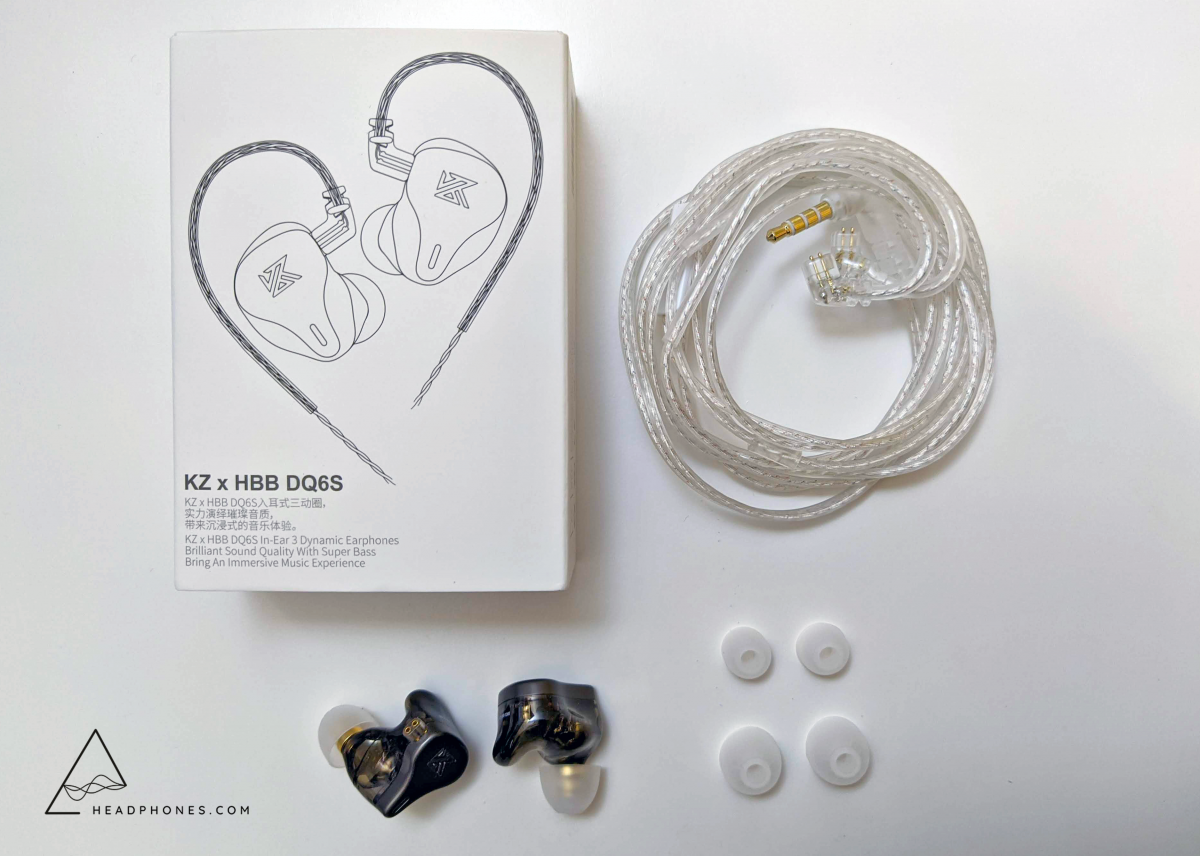
Like the Crinacle CRN, there is a bulge towards the back of the IEM’s shell that presses up against my ear and makes the DQ6S sore to wear after a while. While not an issue for comfort initially, I’m unable to wear them for a long period of time.
Frequency Response and Tuning
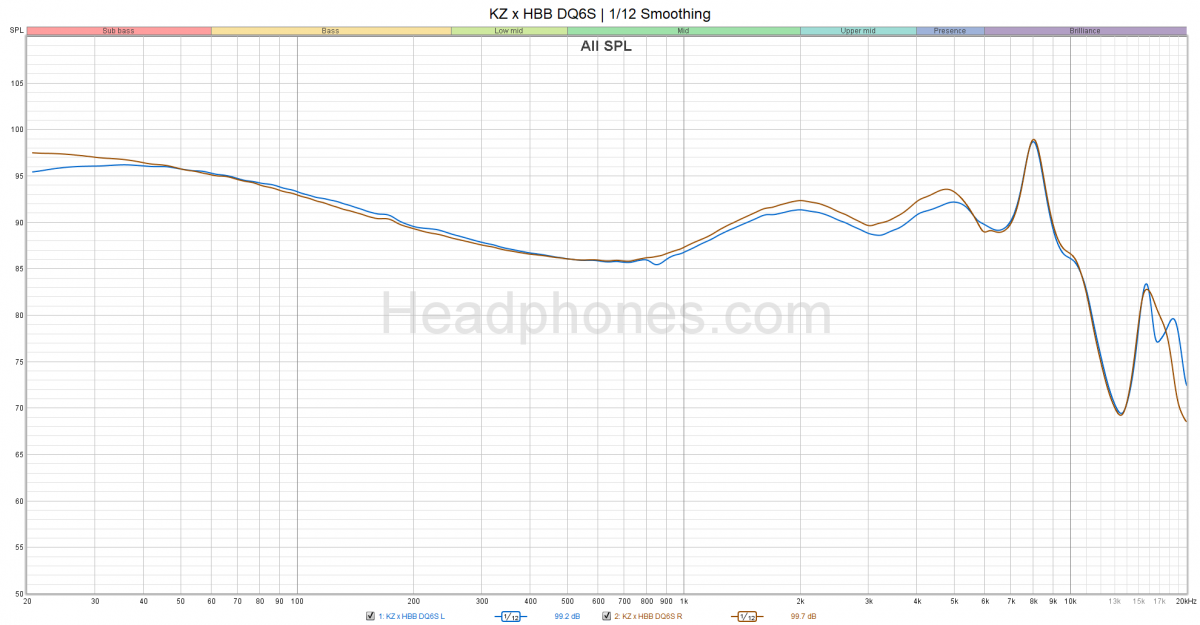
Frequency response of the KZ x HBB DQ6S. Measurement taken with an IEC-711 clone microphone. Comparisons can only be made relative to other measurements taken by this specific microphone. A peak at about 8 – 10 kHz is likely an artifact of the measurement rig and may not exist as depicted here. Measurements above 8 kHz are not accurate.
First impressions of the DQ6S were not very positive. It’s bassy, boomy, and muffled sounding. There’s a lack of clarity and note definition. Vocals are stuffy and don’t cut through the mix. While the DQ6S isn’t devoid of treble, it lacks brilliance. Altogether, the DQ6S has a warm, mushy tuning.
Upon measuring the DQ6S, the frequency graph correlates well to what I’m hearing. There’s a lot of bass in the DQ6S as expected of HBB’s tuning preferences, with some bass bleeding into the lower mids. That in itself isn’t necessarily a bad thing. However the problem lies in the upper mids. There isn’t enough to counterbalance the lower mids elevation, leading to a muffled type of sound. The stuffiness of the vocals can be seen with the primary 2 kHz pinna peak and a dip at 3 kHz that diminishes vocal clarity. To an extent, this is salvaged by to 4 – 5 kHz hump that allows for lower treble notes to be present. But without much treble past the hump, note definition is lost to excessive bass.
Instrument Notes
Drums
Drums are where the muffled, boomy sound of the bass is most apparent. The kick and toms blur together with a slow, lazy oopmh that lacks the definition imparted by a sharp attack. Likewise, the crack of the snare drum’s head is dull, devoid of the energy needed to drive rock songs. On the upside, there’s a lot of volume here giving a good sense of weightiness to each note. For slow, acoustic songs with simple beats or a box drum backing, this can work to the DQ6S’ advantage to provide greater emphasis and macrodynamics. But for anything more up-tempo involving a variety of instruments, the DQ6S isn’t as able to keep up in its drums. The hats and cymbals of the DQ6S are OK. As expected of a tuning like this, they are dull and relatively lifeless. The 4 – 5 kHz bump does give it some energy to keep the DQ6S from sounding dark. Instead, I’d say the DQ6S is a dim IEM.
Guitars/Strings
Like the drums, in slow songs the singular pluck of the bass guitar strings can bring rich, deep notes and add a sense of wholeness to a track. Unfortunately, the bass guitar is unfocused when drums are fully engaged and pounding.
Acoustic guitars do have a lush tone to them with more emphasis on the body of the guitar. With electric guitars, the tonal balance of the DQ6S makes them duller than I would like, lacking the edge that conveys the rawness of their notes.

Vocals
As mentioned above, vocals have a sort of stuffiness to them. Conversely, think of it as not having enough presence or “breath” to them. Vocal clarity suffers as a result, lacking the ability to distinctly pierce through songs as expected. There’s a tad too much lower mids and not enough upper to compensate, exacerbated by a 2 kHz pinna instead of a more ideal 3 kHz. Female vocals are more negatively affected than male. Neither are great compared to modern tuning standards but passable enough for regular listening especially with a bit of brain burn in.
Presentation
Sounds like a $30 IEM. Soundstage, imaging, resolution, instrument separation. They all sound like the price you paid for it. Soundstage isn’t particularly wide, and imaging is three blob-like. The tuning the DQ6S isn’t doing it any favors given its limited technical ability.
Comparisons
KZ ZEX Pro x Crinacle CRN

Between the DQ6S and the ZEX Pro, I’d take the similarly priced ZEX Pro. While the ZEX Pro’s technical performance is a little better than the DQ6S’s, the biggest difference is in its tuning. The target curve based tonal balance of the ZEX Pro overcomes a lot of its limitations. Most notably is that it cleans up all the bass bleed while adding a helping of upper mids. While it does have some timbral issues in its vocals where the DQ6S doesn’t, it’s an easy trade-off for an overall cleaner sound with greater clarity.
CCA CRA

On the surface, the DQ6S is a three-driver version of the single DD CCA CRA. Both are stupendously bassy. However, there are two very significant differences in their tuning that make the CCA CRA vastly superior. The first is the elevation in the upper mids/lower treble, and the second is its upper treble extension. Together, these adjustments add a significant amount of clarity to the CCA CRA and, more importantly, manages to counterbalance the excessive bass. Though it can make vocals sibilant, it gives them a much-needed breath of life compared to the stuffy DQ6S.
While the CCA CRA’s staging isn’t anything special, it’s still a step above the very mediocre presentation of the DQ6S. Resolution and instrument separation are noticeably better than what’s present on the DQ6S. Partly because of the tuning, partly because the single DD implementation of the CCA CRA is just superior. Even the bass has better texture and greater impact with the CCA CRA despite graphing nearly identically in isolation.

Should You Buy It?
No. To be clear, I don’t hate the KZ x HBB DQ6S. You can do much worse for $32. I just also think that there are better options for the money. It isn’t an improvement over anything already on the market and would blend in with any of KZ’s old releases back 3 – 4 years ago. Perhaps if I heard the DQ6S before the CCA CRA this review might have been more favorable but, as it stands, the CCA CRA at $15 is superior in pretty much every way unless you’re sensitive to treble. I’m sure that as HBB continues with his collaboration efforts he’ll develop some very successful products. The DQ6S is just not one of them.
Tripowin x HBB Olina
Price: $99 / Configuration: 1DD
Tripowin Olina provided for review courtesy of Linsoul.
https://www.linsoul.com/products/tripowin-x-hbb-olina
The Tangibles
The Olina arrives in stylish packaging that belies its price point; whoever's doing Tripowin's graphic design has done an excellent job here in my opinion. As might be expected of a $99 IEM, the accessories inside are more or less everything you need and nothing you don't: s/m/l sets of silicone ear tips, a hockey-puck case, and spare filters. There's not much else that needs to be said here.

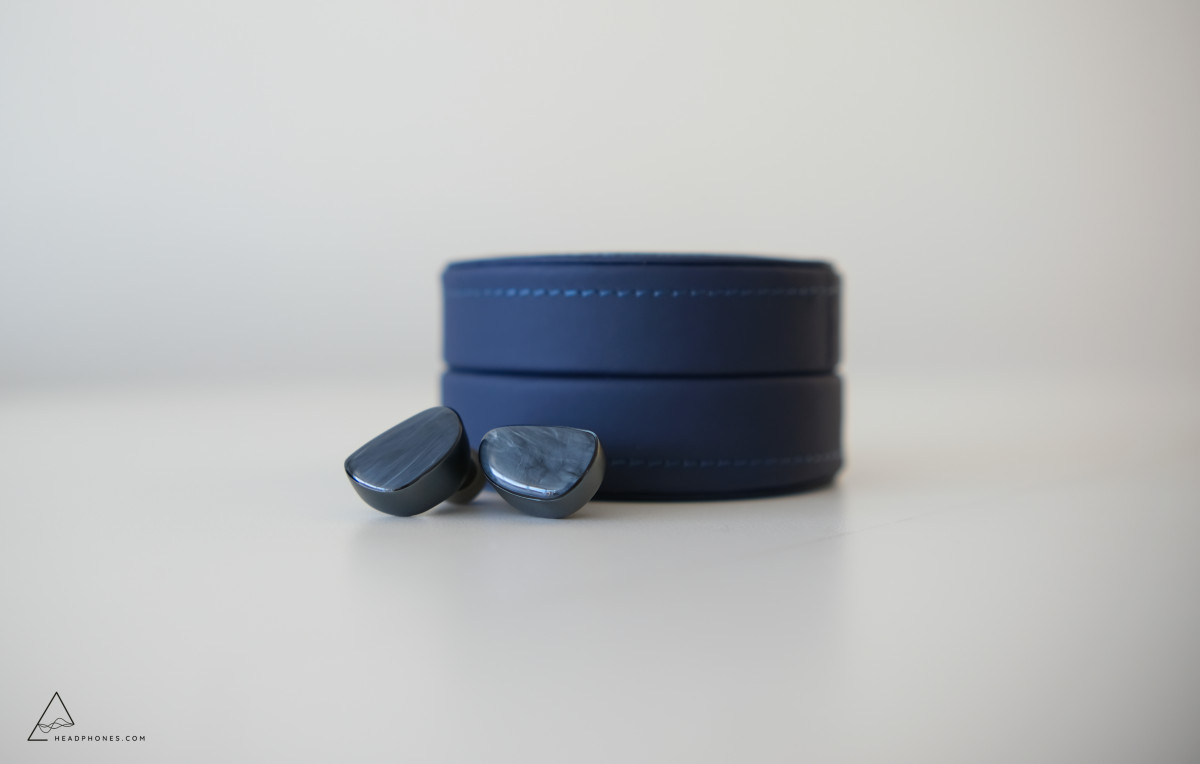
The Olina itself sports a shell reminiscent of its younger brother, the Mele. The faceplate is subtle but attractive with a slight gloss over it. Connectors are flush 2-pin. I had no issues with fit or comfort; however, comfort will be 100% subjective to the end user. I found the included cable to be of good quality even if it looks somewhat plastic-y (you know, the type that disfigures over time due to heat); it's soft, pliable, and mostly devoid of microphonic feedback.
Sound Analysis
Okay - the question likely on most readers' minds is whether the Olina is effectively a Tanchjim Oxygen at less than half the Oxygen's cost. For reference, the Oxygen is one of my favorite single-DD IEMs. This is thanks to its tasteful deviations from the Harman target and its technical prowess which I find is a step ahead of usual suspects that share the 1DD topology, such as the Moondrop DD series and the DUNU Titan S. And now the Olina. Indeed, I'd suggest the answer to the question posed above is "not quite from memory". Despite confirmation that the Oxygen and the Olina share dynamic drivers from the same factory, I can't help but feel that the Oxygen (and Tanchjim Hana 2021) are slightly more refined in the technical department than the Olina. This is likely attributable to the other components that have gone into the construction of the respective IEMs, unit variance, and - of course - aural memory just being fickle like that.
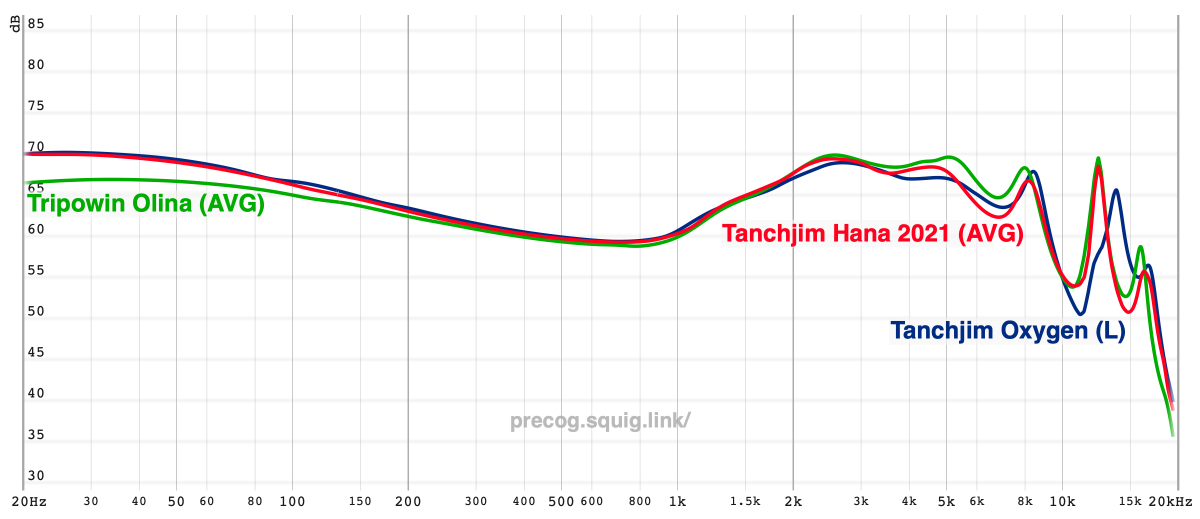
Comparisons aside, the Olina is still a very solid IEM in its own right. It has the sort of presentation that just "sounds right" when your ears first land on them. Bass lines are a hair pillowy for slam - a common characteristic I've observed of this driver - but smearing is kept to a minimum thanks to the Olina's bass shelf exhibiting moderate quantity. The midrange of the Olina is generally slightly depressed in the lower-midrange and upper-midrange leaning, so some might find it a hair bright on first listen. But by no means would I consider it sibilant or anything of the sort. In fact, my only reservation about the Olina's sound signature would really lie in its upper-treble response. It has a resonance peak at ~13kHz that, from memory, I would suggest is earlier and stronger in amplitude than some of the other single-DD IEMs I've talked about above. In any case, it lends to some spice up top. Personally, I don't mind - it begets a sense of shimmer I enjoy - but some might find an IEM like the Moondrop Aria to be more refined in this area.
Technical Performance
For technical performance, the Olina can best be summarized as "it sounds like it's using a competent DD". Notes are adequately fleshed out for daily listening, with the pattern of decay coming across mostly natural. I would really only dock points for a tinge of metallic-ness in the treble, which likely stems from the upper-treble resonance. Listeners should also temper expectations for imaging. The Olina's imaging (and by extension staging) is mostly just average; it doesn't seem to trigger the slightly out-of-head effect that Tanchjim's IEMs possess.
Should You Buy It?
Yes. While it's not quite an Oxygen or Hana 2021, the Olina is still a strong $100 performer with few weaknesses. It neatly slots in with budget titans like the DUNU Titan S (heh) and Moondrop Aria. The Titan S for the thinnest, most analytical listen. The Aria for the warmest and most pillowy. The Olina for the middle ground. I'd be remiss to mention that I tire of this wheel being reinvented so many times (c'mon where are the flagship DDs at?)...but it's hard to complain with the price reductions and subtle refinements.
---
Discuss these IEMs on the HEADPHONE Community Forum.
---
